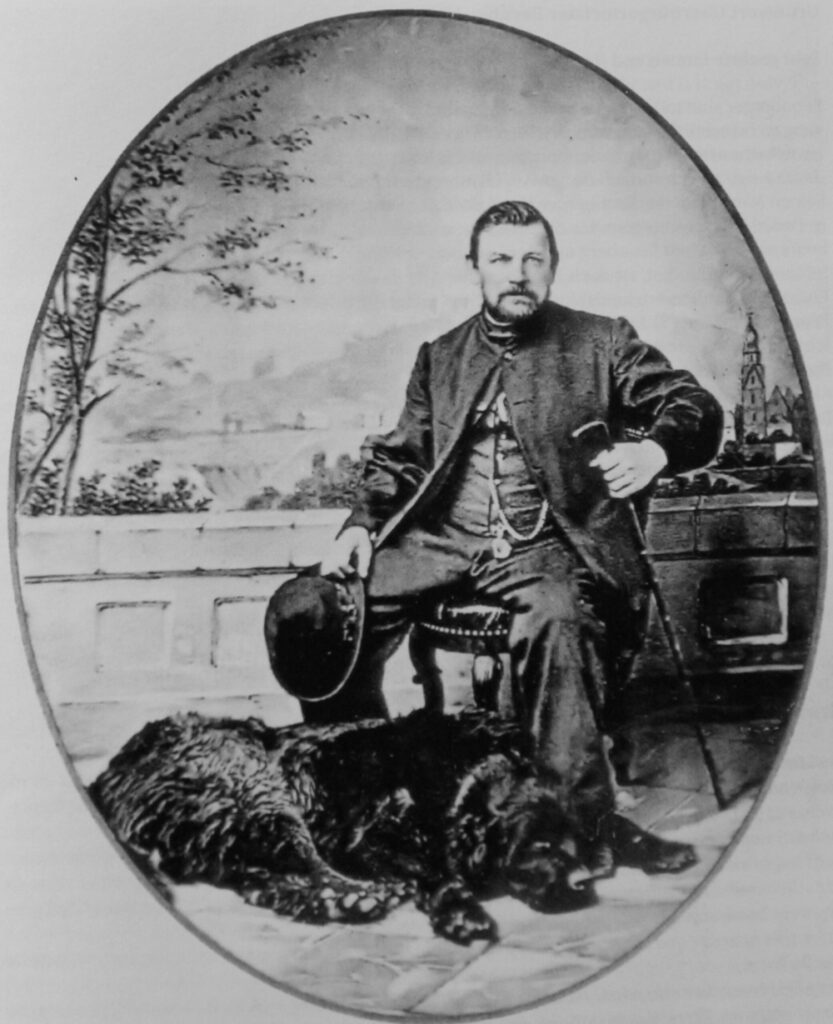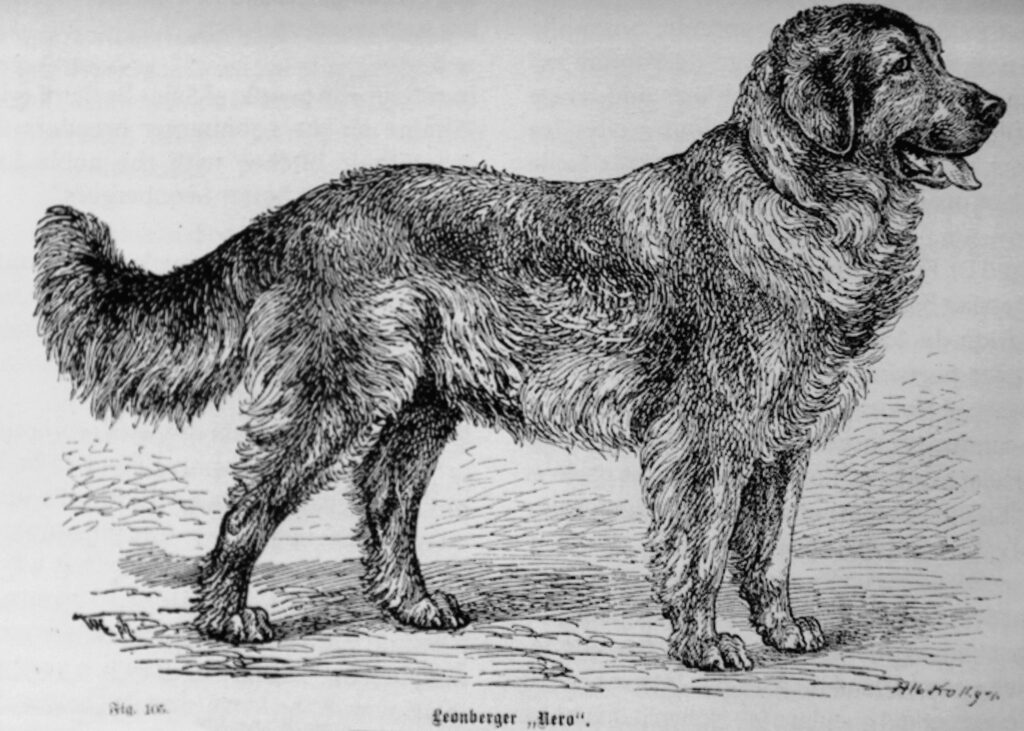BREED HISTORY
The Leonberger was first mentioned over 175 years ago and is one of the older German breeds.
At the turn of the 1830s, in the city of Leonberg in Germany, the city councillor Heinrich Essig undertook the task of breeding a new breed of dogs resembling a lion, which is the heraldic animal of Leonberg.
The Essig farm bred all kinds of poultry, other animals and dogs of various breeds (he sold 200-300 dogs annually).
The cornerstone of the breed was a black and white Newfoundland female dog (landseer type), and a long-haired Bernardine male from a Swiss monastic hospice on the Great St. Bernard.
This mating resulted in black and white dogs the size of St. Bernards, and since the nature of the animals showed desirable suitability as a farm and watch dog, Essig continued breeding for four generations.
In order to consolidate the previous breeding results, he then brought a second male from St. Bernard the monastery and crossed. He also added a Pyrenean mountain dog to the breed.
From first crosses a very large dogs with long white hair and a dark head was born. Later, individuals with golden-red hair and a black mask appeared, and this was what Essig wanted.
The first dog that was actually called a Leonberger was born in 1846, making his home town the oldest documented breeding kennel in Germany, and the Leonberger was also entered in the Studbook at that time.
By crossing the outstanding features of Bernardine, Newfoundland and Pyrenean Mountain Dogs, the Leonberger is the quintessence of the best in these breeds.
Initially, the owners of Leonbergers were the monarchs and the elite of 19th-century Europe, the dog of this breed emphasized the social status of the owner, lovers of this breeding novelty paid 1400 silver guilders for the dog.
Among the owners of Leonbergers were Emperor Napoleon III of France, Prince of Wales in England, King Umberto I of Italy, King of Belgium Leopold I, Italian national hero Garibaldi, Empress Elizabeth of Bavaria “Sisi”, Grand Duke Friedrich von Baden, Tsar Alexander II of Russia, composer Richard Wagner, Chancellor and Prime Minister Otto von Bismarck, and they were all proud of their Leonbergers.
In the 1880s, the first principles of Leonberger breeding were initially described by the painter Albert Kull and Cannstatt Boppel, who was a judge and breeder of the Bernardines. In 1891, the first Leonberger club was established in Berlin, and in 1895 a club in Heilbronn. In 1895, the International Leonberger Club in Stuttgart was also established. The first standard by Albert Kull of the Leonberger were published on May 2nd, 1895, and the painting by Albert Kull comes from this period.
Both world wars decimated the number of Leonbergers and it took 25 years to rebuild the breed after the Second World War.
On July 10, 1948, the German Leonberger Club was established, based in Leonberg, which to this day is the main representative of the breed.
The first Leonberger registered in the Polish Kennel Club in post-war times was a female Bessy v. Ruhlingshof, born in 1985 from Liechtenstein, brought by Mrs. Irena Hudecka.






